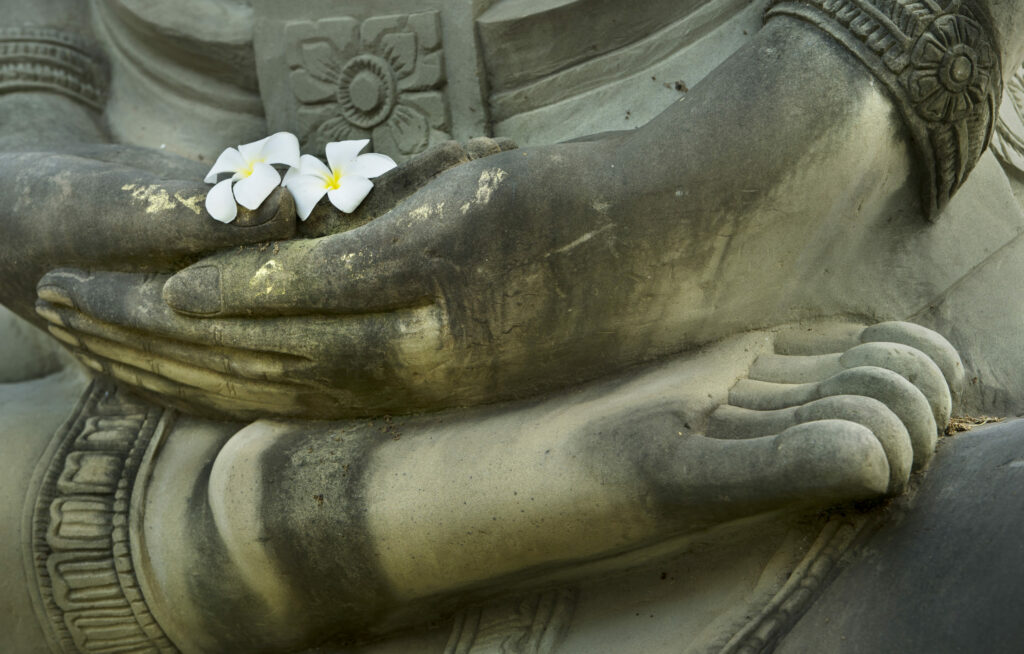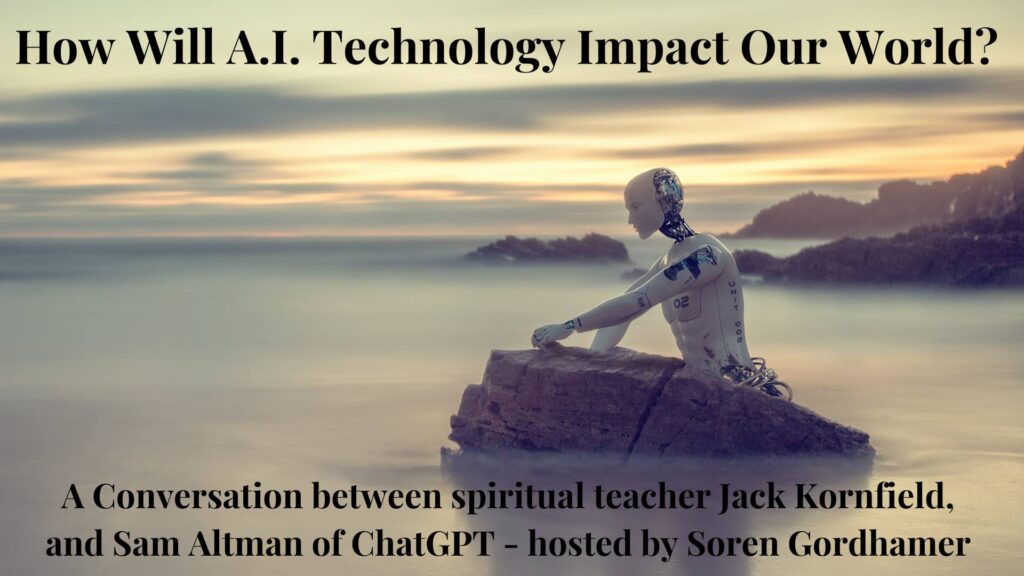Once concentrated, the mind can be directed in specific ways. This function is called “malleability of mind” in Buddhist psychology. It means that we can shift the focus of the mind in surprisingly easy and steady fashion. Spatially, we can change the field of concentration from small to large. If we focus a concentrated mind like a microscope on the tiniest body sensation, ten thousand micro sensations will come into view. Or we can shift to a wide angle perspective and expand our focus so that all experience floats in space, vast like a galaxy. A malleable mind can also change subjects easily, so that we can flexibly switch from one state to another, from unspeakable joy to strength to stillness. With concentration, no matter where we place our attention, it will stay focused.
When I first developed strong concentration, I explored this delightful flexibility and pliancy of mind. As I moved my attention, I was surprised that my mind felt malleable, like soft clay or copper wire. I’d place it one an area of my body and it would stay there. I’d bring up a thought or image for contemplation and the mind would enter into it fully, it would just stay put. I was delighted. It was like the mind had become a well-trained dog. Sit. Stay. Pay attention. It was unmoved by pleasure or pain (in most concentration states pain drops away). For however long I chose, it did whatever it was directed to do, with steadiness, ease and interest.
The malleability of mind can then be combined with the power of intention. Concentrated intentions are surprisingly strong. Meditation practitioners are often amazed by this almost magical property of a well trained mind. When the mind is deeply concentrated, if we say to our self, “May third jhana arise,” it will. If we say, “May happiness arise,” we are flooded in happiness.
This concentrated and malleable consciousness is particularly useful as a tool for insight and intuitive wisdom. With concentrated intention we can ask for wisdom to arise, and it does. When I asked for an understanding of emptiness, I found myself falling backwards into what felt like dark interstellar space, pulled like gravity into the void and then silent for a long time. When I made the intention for the wisdom of impermanence to arise, I was surprised when my attention focused on my balding head. Then it began to spontaneously scan down through my 60 year old body, to the fillings in my teeth, the ear with hearing loss, sinus problems and a stiff neck. It focused on lungs weakened by a bout of pneumonia, a past broken wrist, the scar from an appendectomy, a weak disc in lower back, sciatica, old knees, and sore feet. “OK,” I said, “I get it: this body is truly impermanent, subject to change and decay.”
Concentration has a steadying effect that supports well being and understanding. One experienced practitioner, used the power of concentration to regulate herself in the midst of numerous difficulties. Her regular meditation practice had helped her manage a part time nursing job, do community service work, and care for two young children. Jan had a natural empathy for the world around her and was gifted in caring for others. The scale began to tip however, when her mother-in-law, who lived nearby, had a stroke. Now Jan needed to care for her as well, and she began to feel overwhelmed. She began to have difficulty sleeping, and experienced bouts of anxiety, exacerbated by menopause. When she sat in meditation her body spontaneously shook and trembled and buzzed. She felt as if the news on television, the patients at her clinic, her mother-in-law’s struggle, all the frenetic energy around her, was pouring through her own body without boundaries, unstoppable.
I suggested she stop formal meditation and work with practices of grounding the frenetic energy down through her body into the earth during the day. This would have been helpful for many. But Jan intuitively felt that turning away from meditation would make her anxiety worse. Because she had a gift for easy concentration, she decided to meditate more. Jan changed her practice to loving-kindness and went on retreat with one of my colleagues to work with phrases of loving-kindness and visualization quite ardently. After some days of anxiety and big energy releases, her mind became focused and concentrated. As happiness, steadiness and purity arose strongly, her anxiety fell to the background. To her amazement, she discovered that, mixed in with her previous agitation was wildly unintegrated rapture. As she learned to experience this rapture as an inner wind, she learned to release the energy and rest in deep stillness. As the factors of enlightenment – calm, concentration and equanimity – came into balance, Jan was no longer overwhelmed. Now she could contain the huge levels of trembling excitement.
When her concentration developed further, Jan’s teacher told her to wait until the deepest point in her sitting meditation and then deliberately invite the states of jhana absorption to arise in consciousness. Gradually she was taught to navigate through the first four jhanas. The first two levels of jhana states still contained the strong energy of rapture and her body would become initially overwhelmed by shaking and trembling. But in the third and forth jhanas, Jan found all the trembling and rapture ceased. Instead she sat for long periods of profound stillness, bathed in ease, filled by a sense of grace and unshakable love. This concentration practice felt healing to her, as if her nervous system was re-wiring itself. When she came out of the jhana states, her mind was light and easy, her body had regained a relaxed buoyancy and flexibility.
At the urging of my colleague, Jan began to use the jhana concentration for insight. She investigated the moment to moment construction of her experience. She studied how the states of jhana appear and vanish. Then, because her mind was so malleable and silent, she witnessed the coming and going of a thousand states of consciousness, one after another. Turning toward awareness itself, Jan learned to rest in the emptiness that gives birth to all states.
Jan returned home. She felt as if her body had been refurbished from the inside. She slept better, her anxiety diminished, although she still has bouts of it, and her sense of inner strength and steadiness grew. The focus of her identity had shifted from trouble to wisdom. Her sensitivity remains, but it has become less a problem and more like a gift. She is still active in a wide range of community services. Her sensitivity to suffering keeps her heart connected to all those around, yet the wisdom and concentration remain her ground.
This excerpt is taken from the book, “The Wise Heart”






